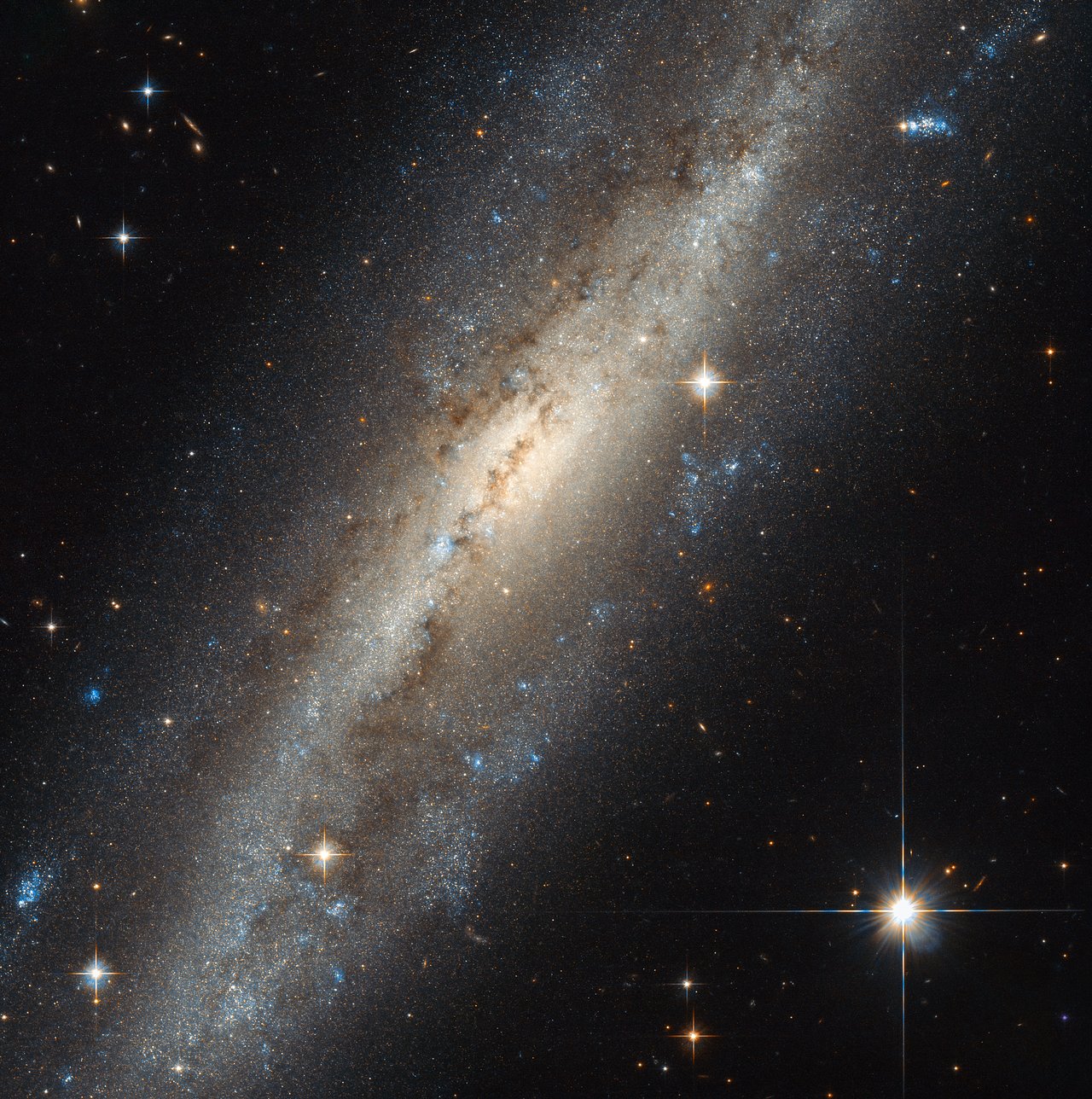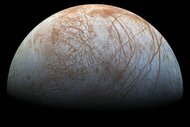Create a free profile to get unlimited access to exclusive videos, sweepstakes, and more!
The other Andromeda galaxy

[Image credit: ESA / Hubble and NASA]
Oh, my, yes, you want to click that image above. You’re only seeing a part of it here, and the whole thing is pretty great.
What is it? Why, it’s an Andromeda galaxy. No, not the Andromeda galaxy. A different Andromeda galaxy.
Right. Let me explain.
The sky is pretty big, and that can make it inconvenient to point out objects in it. “I saw a really cool thing <waves vaguely> over there” isn’t going to cut it when you’re trying to show someone that really cool thing. So we divide the sky up into 88 separate well-defined regions called constellations, which is basically just an official codification of the ancient constellations that have been around for millennia*. We also use a version of latitude and longitude on the sky, but that’s more for precision in specific circumstances, just like you’d casually say that Ann Arbor is in Michigan instead of saying it’s at 42.2808° N, 83.7430° W.
Constellations are named after lots of different things, including Greek myths. There’s a whole chunk of sky near the north celestial pole where the constellations all have names from one particular myth: Cepheus, Cassiopeia, Cetus, Pegasus, Perseus, and Andromeda (if you’ve read your Edith Hamilton or seen the original Clash of the Titans, these names may be familiar).
As a reminder, the Universe is filled with amazing objects to see. Some of these objects are closer than others, making them big and bright and easy to spot. Inside the borders of Andromeda on the sky lies a magnificent spiral galaxy that is the closest, biggest example of such a beast in the Universe. Officially called M31 (the 31st object in Charles Messier’s catalog of things in the sky), at a relatively close 2.5 million light years away, it’s visible to the naked eye. It’s so iconic we just call it the Andromeda Galaxy.
But that’s unfair, because there are plenty of other galaxies near it in the sky. NGC 7640 — the galaxy pictured above— is a fantastic example.
It, too, lies within the boundaries of Andromeda, but at 30 million light years distant, it’s more than 10 times farther away than its sky neighbor. They just happen to lie along the same line of sight from Earth.
But it’s similar in some ways. It’s a spiral galaxy, like M31, and we see it at a very low angle, nearly edge-on. Sometimes, that can make a galaxy’s spiralness a bit difficult to see, but in the Hubble Space Telescope image above, we can exploit a helpful clue given to us by nature.
The spiral arms of galaxies are essentially traffic jams in which stars and clouds of gas and dust slow down a bit as they orbit the center of the galaxy. This can cause collisions between clouds, which in turn can then compress, collapse, and form stars. Over billions of years those stars disperse, leaving the nest to move about the galaxy on their own.
But here’s a thing: Massive stars don’t live long. They explode as supernovae before they get very far. These stars are also hot, blue, and very bright, and don’t get far from the spiral arms in which they were born. So, when we look at a spiral galaxy, the arms tend to be punctuated by bright blue stars.
In the Hubble image above, you can see that! One arm starts to the lower left of NGC 7640’s core and sweeps around to the lower right of it, and another is above the core on the other side of the galaxy. The streamers of blue stars give them away. You can see them even better in lower-resolution but wider-field images of the galaxy taken from the ground. In those, the arms are pretty obvious.
In the Hubble image you can see that the core of the galaxy is redder; those are much older lower mass stars, formed long ago, the blue ones born there long since dead. The really bright stars in the image, by the way, are foreground stars in our own galaxy.
There’s one more thing to note: It’s frankly amazing we can see stars in this galaxy at all. For hundreds of years, before we started attaching cameras to telescopes, galaxies like NGC 7640 just looked like whirlpools, fuzzy and indistinct (NGC 7640 is, after all, 300 million trillion kilometers away!). Their true nature wasn’t understood. In the 1920s, however, photography revealed individual stars in them, and it was finally determined that galaxies were actually collections of billions of stars, millions of light years away. It was a fundamental revolution in our understanding of the Universe.
It was Edwin Hubble, himself (and his team of astronomers), who worked this out ... by taking images of the Andromeda Galaxy. THE Andromeda galaxy. And here, a century later, we use a telescope named after him to peer across the cosmos and easily see stars in another Andromeda galaxy much, much farther away.
I love this feature of humans: We find a puzzle, and we use our big brains to figure out how to solve it. And when it comes to science, we get better at it over time. That’s what science does. And when we use our science to look outwards, we see beauty and wonder, magnified by understanding. It’s my favorite confluence of human endeavors.
*Well, except in the southern hemisphere, where the constellations were made up by European explorers when they finally made their way far enough south to see them. It’s worth noting that these official southern constellations ignore the ones used by many ancient cultures in that hemisphere, which sadly was often the way of European explorers.


























